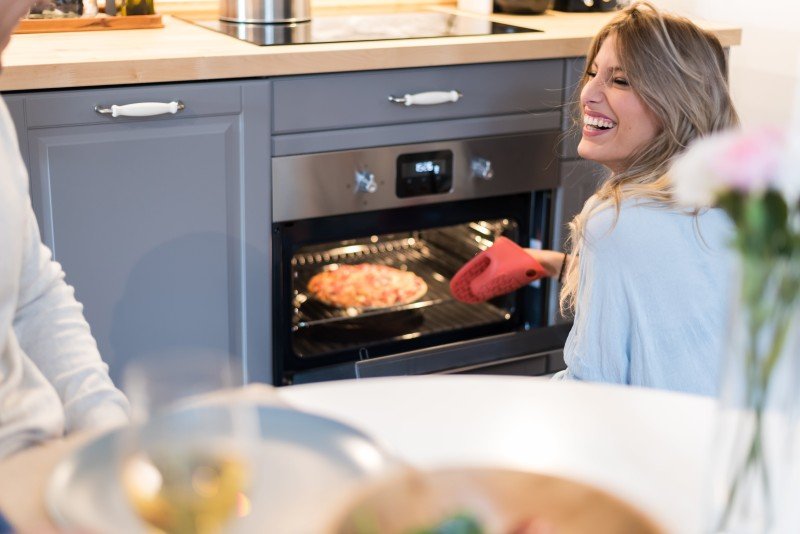
Builtin Ovens
Add a review FollowOverview
-
Founded Date February 26, 1918
-
Sectors Chemical Engineering
-
Posted Jobs 0
-
Viewed 28
Company Description
Guide To Builtin Ovens: The Intermediate Guide In Builtin Ovens
The Rise of Built-in Ovens: Enhancing Modern Kitchens
In the ever-evolving world of home improvement, built-in ovens have actually become a staple in contemporary kitchen design. These appliances not just use a smooth and smooth aesthetic but likewise contribute substantially to the performance and performance of home cooking. This short article looks into the numerous elements of built-in builtin Ovens, including their benefits, types, setup factors to consider, and upkeep, in addition to regularly asked questions to supply a detailed summary.
What is a Built-in Oven?
A built-in oven is a home appliance created to be set up into kitchen cabinetry, giving it a streamlined look and maximizing counter space. Unlike standard freestanding ovens, which stand alone and are often bulky, built-in ovens fit flush with kitchen cabinetry for a more integrated appearance. They are offered in numerous sizes, styles, and features, accommodating a large range of culinary needs and kitchen styles.
Benefits of Built-in Ovens
Built-in ovens come with numerous advantages that make them attractive to property owners. Below are a few of the essential advantages:
- Space Efficiency: Built-in ovens conserve counter space while optimizing kitchen designs.
- Customizable Design: They can be integrated into cabinets, allowing house owners to customize aesthetic appeals according to personal taste.
- Improved Performance: Many built-in ovens come geared up with sophisticated cooking innovations, enabling for much better heat circulation and faster cooking times.
- Accessibility: Their setup at eye level makes it simpler to inspect food without flexing down, supplying greater convenience and safety.
- Resale Value: A modern-day, well-designed kitchen can enhance residential or commercial property value, making built-in ovens an investment worth thinking about.
Kinds Of Built-in Ovens
Built-in ovens can be categorized based upon their style and function. The following list lays out the common kinds of built-in ovens readily available on the market:
- Single Ovens: A basic design that features one cooking compartment.
- Double Ovens: These included two separate compartments, which permit for cooking multiple dishes at various temperatures.
- Wall Ovens: Installed into the wall for a space-saving option, these ovens use convenience and availability and can be either single or double.
- Steam Ovens: These make use of steam for wet cooking and are often favored for much healthier meal preparation.
- Convection Ovens: Designed with a fan that distributes hot air, ensuring even cooking and browning.
| Type | Description | Suitable For |
|---|---|---|
| Single Oven | One cooking compartment for basic baking and roasting. | Small families and kitchen areas. |
| Double Oven | Two compartments for simultaneous cooking of various meals. | Large families with diverse menus. |
| Wall Oven | Built into the wall for easy gain access to. | Space-conscious kitchens. |
| Steam Oven | Cooks utilizing steam for much healthier alternatives. | Health-conscious people. |
| Convection Oven | Circulates hot air for even cooking and quicker results. | Baking enthusiasts and chefs. |
Installation Considerations
Selecting to set up a built-in oven includes several considerations to make sure that it fits perfectly within the kitchen. Essential factors include:
- Cabinet Dimensions: Accurate measurement of the cabinet area needed for the oven is crucial for a correct fit.
- Power Supply: Built-in ovens generally require a dedicated power supply; consulting a licensed electrical contractor may be required.
- Ventilation: Ensure that the oven’s ventilation requirements are satisfied to promote safe operation.
- Local Building Codes: Compliance with local codes is important when installing any kitchen home appliance.
It’s highly advised that installation be performed by specialists to guarantee safety and adherence to producer specifications.
Upkeep of Built-in Ovens
Preserving built-in ovens is vital to guarantee their longevity and operation. Below are some pointers for reliable maintenance:
- Regular Cleaning: Wipe down surface areas after each usage to avoid build-up; consider self-cleaning choices if readily available.
- Inspect Seals: Inspect the oven door seals routinely for wear and tear to preserve efficiency and prevent heat loss.
- Calibrate Temperature: Occasionally check and adjust oven temperature settings if cooking results are inconsistent.
- Expert Servicing: Schedule routine upkeep with qualified technicians for electrical elements and much deeper cleansing.
Frequently Asked Questions (FAQs)
Q1: How do I choose the right size built-in oven for my kitchen?
A1: Measure the available cabinet space and think about the cooking habits of your household. Single or double ovens are common choices based upon meal preparation needs.
Q2: Are built-in ovens more energy-efficient than freestanding ones?
A2: Built-in ovens can be more energy-efficient due to much better insulation and advanced cooking innovation; however, actual efficiency depends upon the particular model and use.
Q3: Can built-in ovens be installed anywhere in the kitchen?
A3: Built-in ovens require particular cabinets and might need a devoted source of power, so planning their positioning thoroughly within the kitchen layout is important.

Q4: What type of maintenance do built-in ovens require?
A4: Regular cleansing, inspecting door seals, calibrating temperature levels, and professional maintenance as needed are all parts of proper upkeep.
Built-in ovens are an impressive addition to modern kitchens, using both visual and useful advantages. Their space-saving style, personalized choices, and advanced features cater to diverse cooking requirements. When considering a built-in oven, property owners ought to consider their specific culinary preferences, kitchen layout, and upkeep abilities. By doing so, they would be making an important financial investment in their home, increasing both functionality and style.
